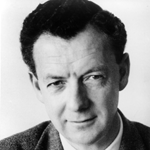The brilliant and talented piano and TabletPC genuis Hugh Sung has a terrific post about the Sequenza21 concert where he was a star performer. Hugh is also one of the nicest people alive.
Kyle Gann, who drove two hours down and two hours back to Bard for the concert, has some nice words about the concert here. Kyle turned 37 yesterday.
Our congratulations to regular Darcy James Argue who is one of the 29 recipients of the latest round of the American Music Center’s Composer Assistance Program (CAP). The complete list is here.
Altman was one of the best.
Update: Speaking of birthdays, today is Gunther Schuller’s 81st. Richard Buell tells me that when Schuller was 16 and the first horn of the the Cincinnati Symphony, he auditioned for the Ellington band, playing Johnny Hodges’s charts.
 There are three anniversaries today of important events connected by a fascinating thread. November 22nd is remembered by many for the assassination of
There are three anniversaries today of important events connected by a fascinating thread. November 22nd is remembered by many for the assassination of 


 ‘If you’re talking about “relevance to the wider culture” and “speaking to our times“, and all that Greg Sandowian stuff, I couldn’t possibly care less … People seem to forget that there’s always going an audience for whom Beethoven’s 5th or La Boheme is a brand new experience’ – writes Henry Holland today in
‘If you’re talking about “relevance to the wider culture” and “speaking to our times“, and all that Greg Sandowian stuff, I couldn’t possibly care less … People seem to forget that there’s always going an audience for whom Beethoven’s 5th or La Boheme is a brand new experience’ – writes Henry Holland today in  All too often today, appealing menus of new music turn out to be measly meals relying heavily on
All too often today, appealing menus of new music turn out to be measly meals relying heavily on 
